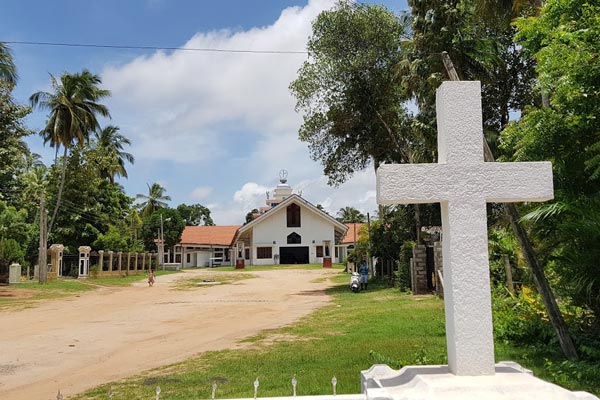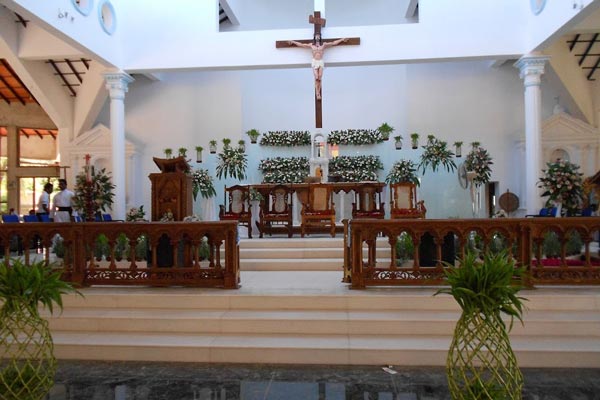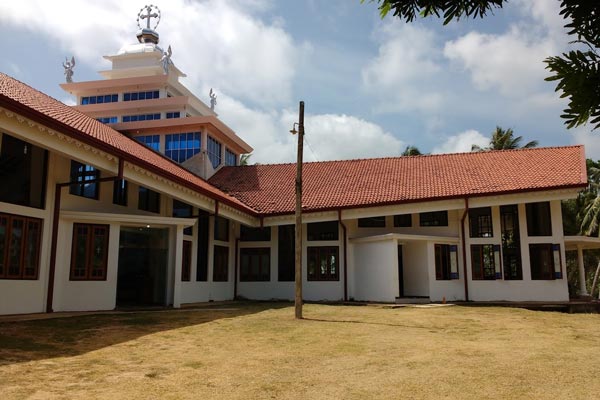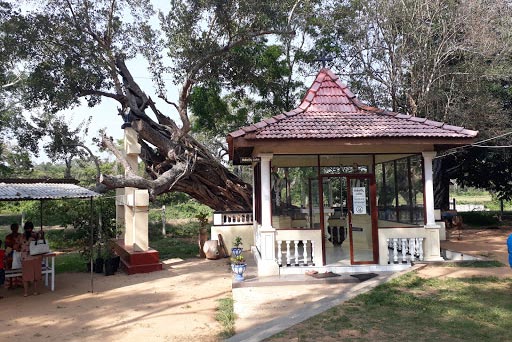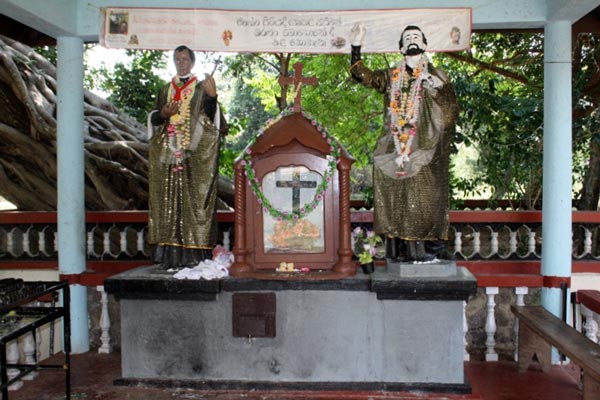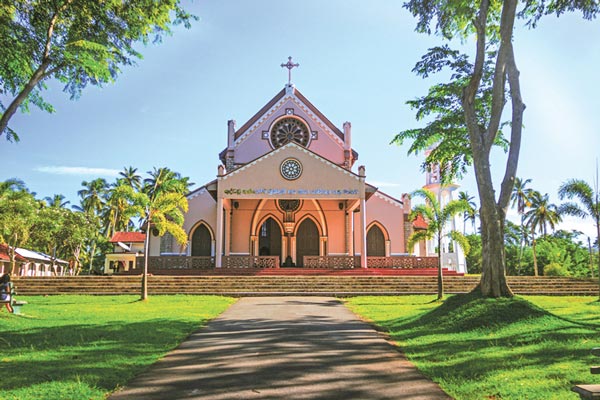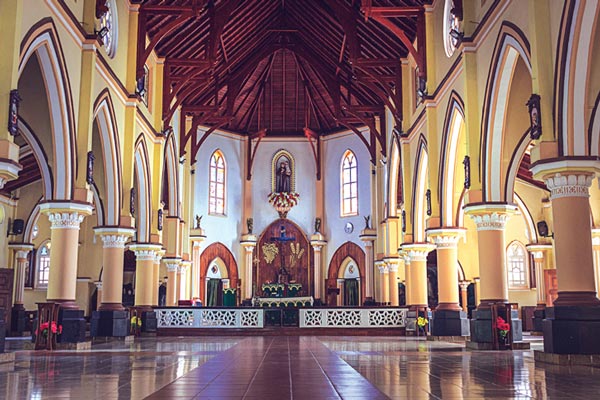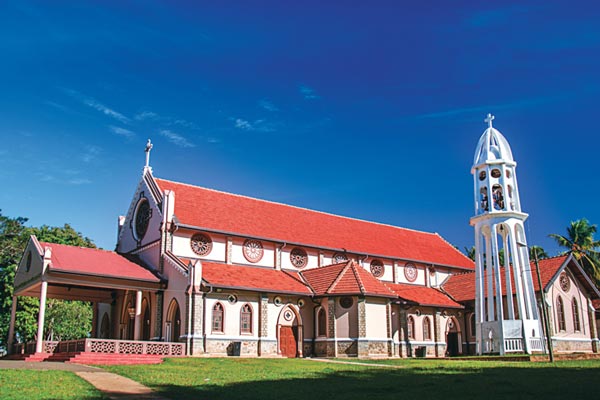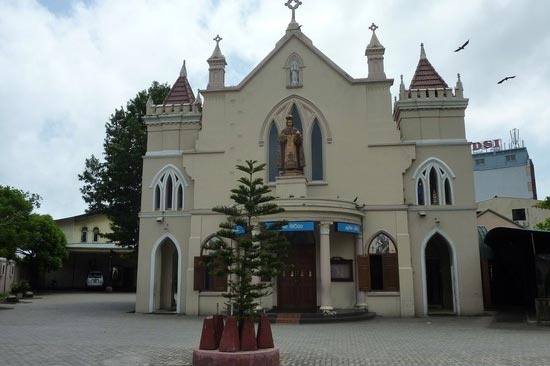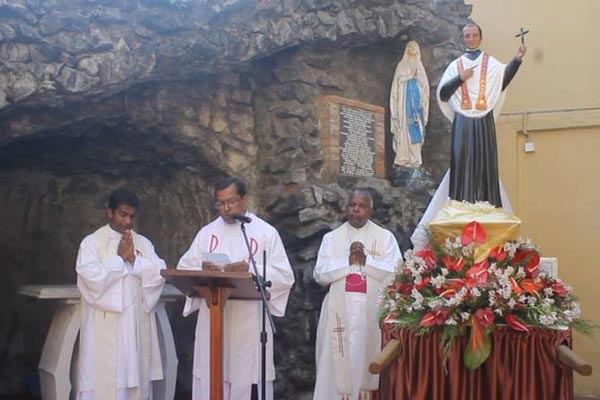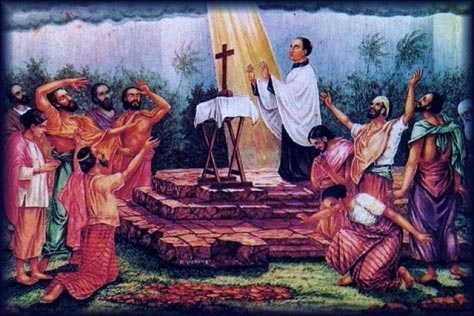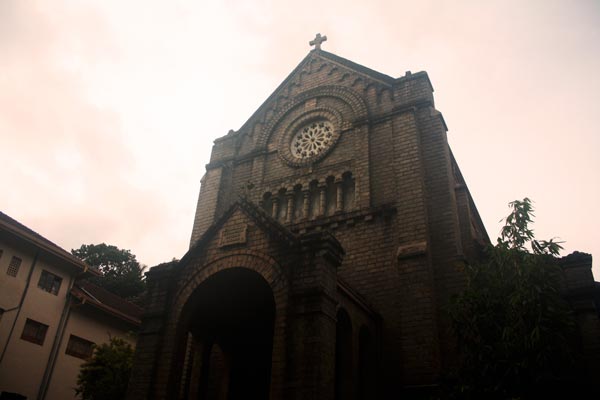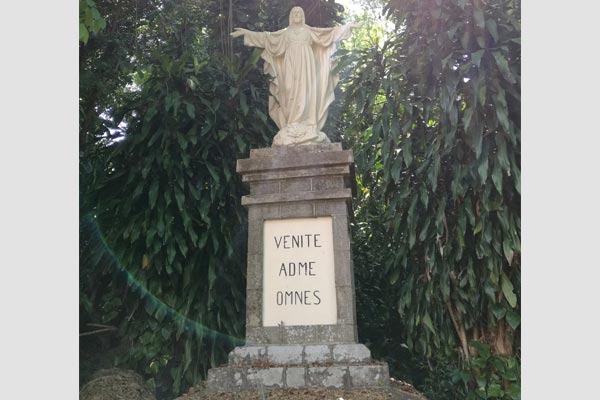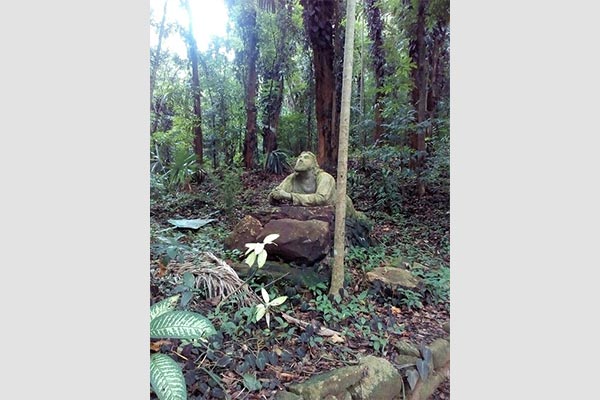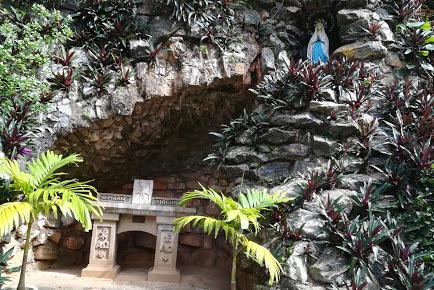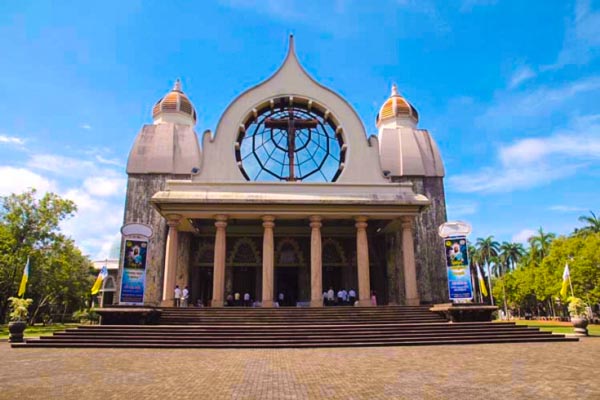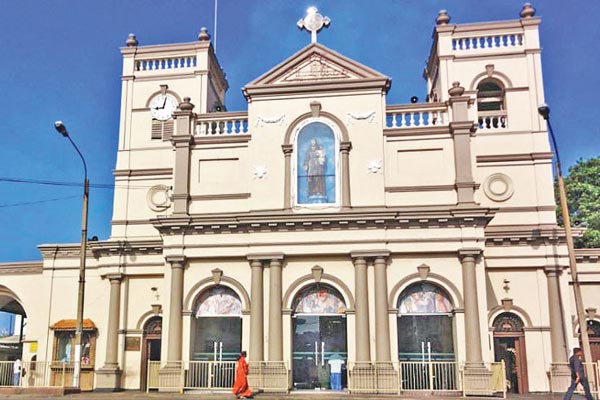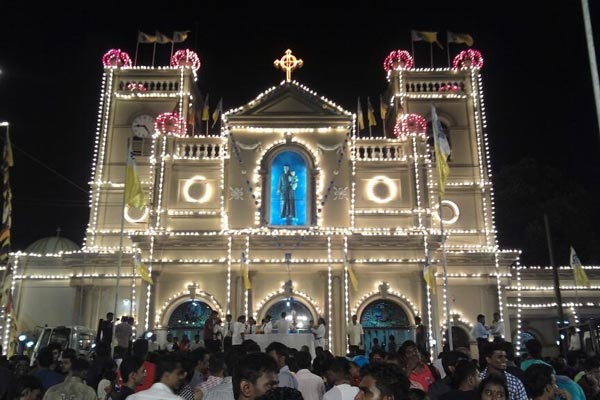- Breakfast at Hotel
- Transfer from Kandy to Colombo via Ragama
Tewatte
Visit the replica of Basilica church in Tewatte dedicated to our Lady of Lanka.
The origins of the shrine at Tewatte date back to 1911 when a few Catholics together with the Parish Priest of Ragama Fr. A. Kieger OMI, erected a small chapel of Our Lady of Lourdes. This area was then a part of the parish of Ragama. On 11th November 1917, a small grotto of Our Lady of Lourdes was added by Fr. A. Collorec OMI, with the assistance of some Catholic workers from Colombo. The Chapel was later enlarged to accommodate the increasing number of pilgrims and a larger grotto of Our Lady of Lourdes was built by the side of the church in the 1930’s. The church with a “Holy Well” by its side and the shrine gradually became a place of pilgrimage for the Catholics of the Archdiocese of Colombo.
The Grotto on the Basilica grounds is a replica of the rocks that remained France. Some of the rocks that remained from the construction of the grotto were utilized in building the Basilica. The remains of Fr. Marthurai, who took great pains in the construction of the building is buried in the grotto.
The sacred shrine of Tewatte came into prominence with World War II. The Second World War, declared in 1939, had a grave impact on Sri Lanka. Many countries in Asia had already come under Japanese occupation and the enemy had come as close as Burma, Malaysia, Singapore and India.
Japan had now set her eyes on Sri Lanka especially because of the strategic importance of the Island’s natural harbour in Trincomalee, considered the largest in Asia wielding control over the whole Indian Ocean. Sri Lanka, at the time being a colony of the British Empire, was also in a ‘state of war’. This Basilica was built in fulfillment of a vow made by the Archbishop Masson Omi during the World War II to be freed from this invasion.
- Lunch at outside Indian restaurant
Colombo
Visit the St. Lucia’s Cathedral situated in Kotahena and St. Anthony’s Church, Kochchikade.
St. Lucia of Sicily whose feast falls on December 13 is venerated the world over as the protectress against eye trouble. Legend has it that she had the most beautiful pair of eyes and that she pulled them out to present them to an unwelcome suitor who was enamored by their beauty. However her eyes were miraculously restored to her more beautiful than before.
Named after this virgin and martyr saint is St. Lucia’s Cathedral of Kotahena, the oldest and largest parish cathedral in Sri Lanka and the seat of the Archbishop of Colombo. Situated at Kotahena to the north-east of Colombo this magnificent edifice sprawled on 18,240 Sq. feet of land, rises to a height of 150 feet and has the capacity to accommodate 6000 people in its nave.
The 110 year old cathedral had humble origins in a small chapel of wood and cadjan built by the Oratorian fathers in 1760 when Ceylon was under Dutch occupation. This was replaced by a larger church of brick and mortar in 1782. When Ceylon was detached from the jurisdiction of the Archbishop of Goa in 1834, Rev. Fr. VincenteRozairo was appointed the first Vicar-Apostolic of Ceylon and St. Lucia’s Cathedral became the first cathedral of Sri Lanka.
St. Anthony’s Kochchikade is one of the best-known Churches in the Archdiocese of Colombo, both to Christians and non-Christians. Declared as a national shrine within the Archdiocese it is a Church that always has devotees seeking the assistance of the Saint. The site on which the Church was built brings into focus both the difficulty the people had to preserve their faith during the persecution by the Dutch East India Company which ruled the Maritime Provinces and the conviction of the people in their religion. The origin of the Church is accorded to Fr. Antonio. He was a companion to Joseph Vaz and had been assigned to minister to the religious needs of the Catholics in Colombo. He resided in a small house near Philip Neri’s Church in Pettah and whilst working as a labourer during the day, in the nights he held service for the faithful. One day on hearing that the Dutch soldiers aware of his residence were coming to arrest him, Fr. Antonio fled towards Kotahena. Some fishermen recognized him. The erosion of the sea, which prevented them from drying their nets, and promised him protection, if he could intercede from his God forth sea to recede, frustrated them. The priest surrounded by the fishermen and the soldiers who had by then arrived, prayed and the sea receded. The Dutch soldiers reported the incident to the Governor who gave the priest the land. He built on it a small hut and since the priest was from Cochin, the land was referred to as the place in which the Cochin had a shop hence the name Kochchikade. The present Church according to the Historical Sketch given by DJB Kuruppu was blessed on the 1st of June 1834, ‘This Church is a material link with the past. The little mud hut put up by Fr. Antonio lasted till 1806, when it was enlarged. In 1822 the statue of St. Anthony was brought from Goa and placed in the altar of the small chapel. This is the statue that is venerated and though the altar on which it rests today is the side altar, it was the original altar of the old Church. It stands on the very spot sanctified by the miracle to which the origin of the statue is due.”
In the evening proceed on a city tour of Colombo. Colombo like many capital cities in developing countries is fast changing its face. Almost overnight, skyscrapers arise from where old buildings once stood. Yet in some parts, the old world charm is retained. For example, there is a 100-year-old clock tower and several British built colonial buildings. A Hindu and a Buddhist temple, residential areas where you find the stately homes of the affluent, the Bandaranaike Memorial International Conference Hall (BMICH)- an outright gift to Sri Lanka from the People’s Republic of China. & also visit House of fashion & Odel for a Shopping tour as well.
- Dinner and Overnight at hotel
